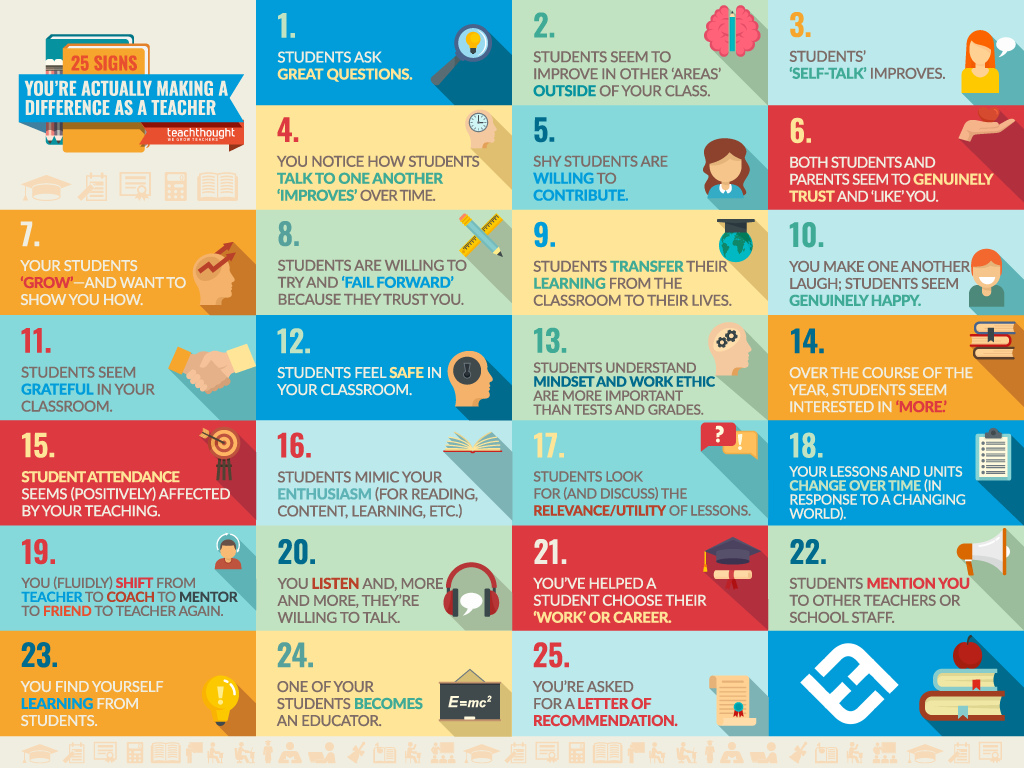
What Are The Signs That You’re Making A Difference As A Teacher?
contributed by Saga Briggs, opencolleges.edu.au
This post has been updated and republished
How can you know if you’re really making a difference as a teacher?
You plan. You assess. You network. You collaborate.
You tweet, differentiate, administer literacy probes, scour 504s and IEPs, use technology, and inspire thinking. And for all of this, you’re given bar graphs on tests to show if what you’re doing is actually making a difference. But there are other data points you should consider as well.
20 Signs You’re Making A Difference As A Teacher
1. Students ask great questions.
2. Students seem to improve in other ‘areas’ outside of your class.
3. Students’ ‘self-talk’ improves.
4. You notice how students talk to one another ‘improves’–becomes more human and kind or complex or creative–over time.
5. Shy students are willing to contribute.
6. Both students and parents seem to genuinely trust and ‘like’ you.
7. Your students ‘grow’–and want to show you how.
8. Students are willing to try and ‘fail forward’ because they trust you.
9. Students transfer their learning from the classroom to their lives.
10. You make one another laugh; students seem genuinely happy.
11. Students seem grateful in your classroom.
12. Students feel safe in your classroom.
13. Students understand mindset and work ethic are more important than tests and grades.
14. Over the course of the year, students seem interested in ‘more’–topics, questions, activities, friendships, projects, etc.
15. Student attendance seems (positively) affected by your teaching.
16. Students mimic your enthusiasm (for reading, content, learning, etc.)
16. Students look for (and discuss) the relevance/utility of lessons.
17. Your lessons and units change over time (in response to a changing world).
18. You (fluidly) shift from teacher to coach to mentor to friend to teacher again.
19. You listen to students and, more and more, they’re willing to talk.
20. You’ve helped a student choose their ‘work’ or career.
21. Students mention you to other teachers or school staff.
22. You find yourself learning from students.
23. One of your students becomes an educator.
24. You’re asked for a letter of recommendation.
